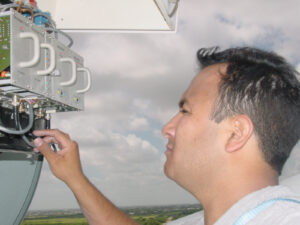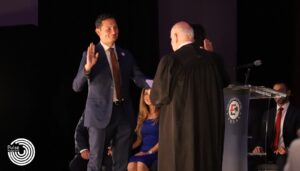Marine-time Exploration
The importance of acres of seagrass and oyster reefs are among the many mysteries to be solved by students in the new School of Earth, Environmental and Marine Science.
“The students are going to get a very broad view of the marine and coastal environments,” Director of Multidisciplinary Sciences David W. Hicks said. “Being able to see how the marine environment affects the whole socio-economics of the Valley in terms of tourism.”
The Rio Grande Valley (RGV) is a unique location for this school and its programs because of its temperate, tropical and climatic divides.
“We’re kind of on the edge of this temperate fauna and Caribbean fauna in the marine environment, so that’s why we have all these neat things like mangroves,” Hicks said. “We have lots of tropical reef fish if you were to ever go diving, or even on our jetties and offshore.”
The south Texas Gulf of Mexico also has Laguna Madre, one of five hypersaline lagoons in the world, and the only one in the United States.
“[The lagoon] is completely covered with seagrasses on the bottom,” Hicks said. “You can snorkel out and I can show you some places that you could go in Laguna Madre, like behind the convention center, where you can go snorkel and you could see 100 feet in the water–it’s just that clear.”
The continental shelf is closest to the RGV shoreline compared to any other shoreline along the Gulf of Mexico, making it easy to see clear blue waters just a couple miles out into the ocean.
The School of Earth, Environmental and and Marine Sciences also aims to educate its students in a way that helps them adapt the information they learn into policy in a way that will protect the marine environment.
The courses in the undergraduate and graduate programs have a lot of skill-oriented hands-on activities for its students.
Samantha Silvestri, a graduate student and teaching assistant, is pleased with the opportunities she has gotten while attending UTRGV.
“Being down here, so close to the ocean, South Padre Island is right there–I feel like it’s about time that [the university] had a marine science program,” the Long Island, New York native said. “There’s so much opportunity out here to get your feet wet, to dive into the field.”
Sergio Gonzalez, a junior studying biology and assisting with research, likes the experience and freedom that this school has given him. He also likes that the program has enabled him to learn outside of the classroom, which he finds refreshing.
“I was feeling a little burnt out and this project has given me an opportunity to recharge my batteries a little bit,” Gonzalez said. “Being able to take part in something that we can possibly see as a career path has definitely been exciting and interesting.”
Students graduating from The School of Earth, Environmental and Marine Sciences can choose to take different routes upon graduation. Some graduates can go on to pursue a master’s or doctor of philosophy in similar fields. Others can work for federal or state agencies such as Texas Parks and Wildlife, the Texas Commission on Environmental Quality, the Texas General Land Office or the United States Fish and Wildlife Service. There are even law degrees related to ocean and environmental policy. However, the options to go into medical school or dental school are also possibilities as the coursework for all degrees have a strong scientific foundation.
Students interested in this school should contact Dr. David Hicks at david.hicks@utrgv.edu or Marine Biology Coordinator Kristen Kline at kristen.kline@utrgv.edu. Students seeking more information can also call their office at 956-882-5055.







